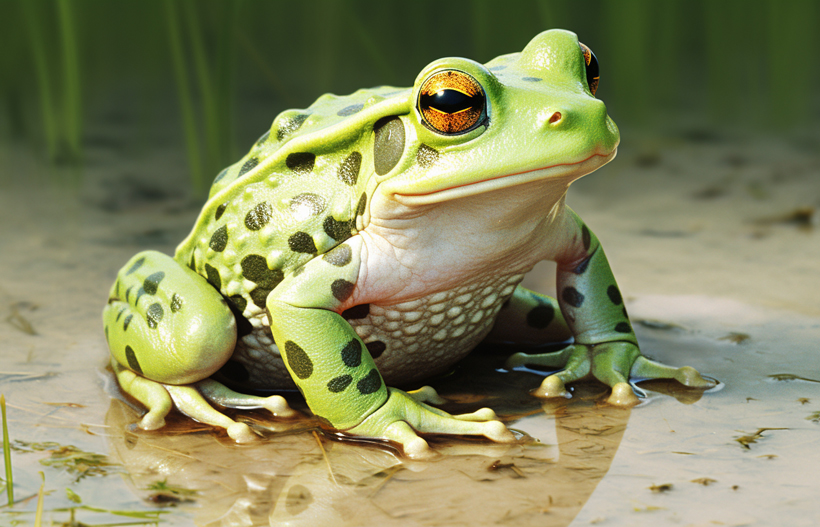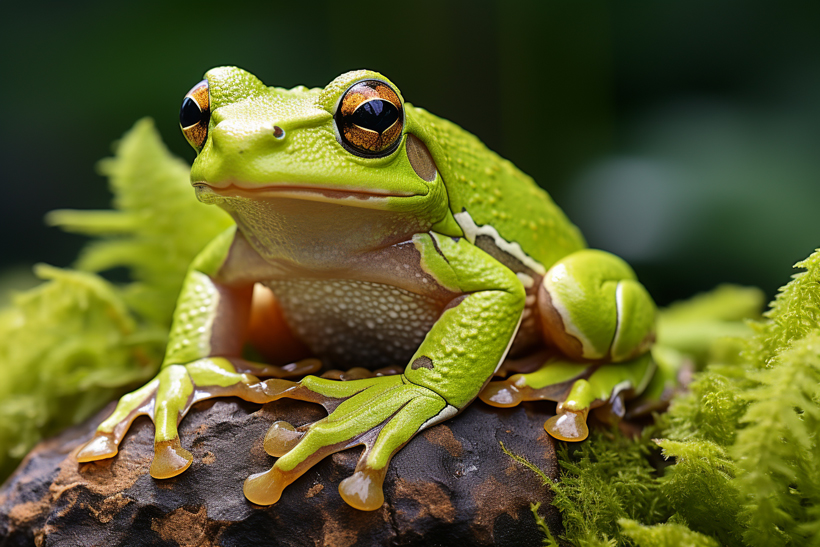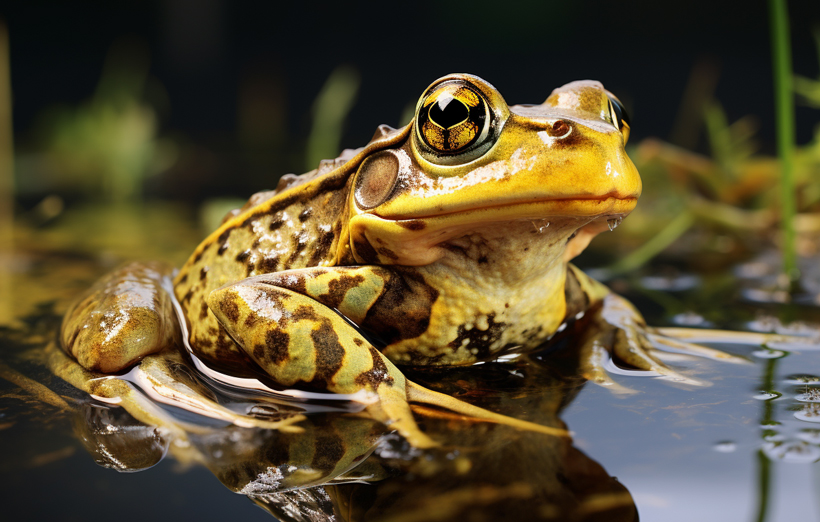Is salt lethal to the frogs? The answer to this question requires extensive reading of research journals and practical experiences. Unlike tons of content floating around the internet, our team has curated the answer from scientific data, research journal references, and firsthand experience.
The question remains: Does salt kill frogs? The answer is yes. Salt can eventually kill frogs. As frogs have permeable skin, direct contact with salt creates severe dehydration, leading to organ damage. Their skin can be burnt with irreparable damage. Interference of natural osmotic balance and metabolic imbalance can lead frogs to a painful death.
But salt does not kill frogs instantly; exposure time, stages of a frog’s life, the concentration of salt, and frog species type are the factors that determine the upshot of salt on frogs. Further in this guide, we have attached several research data that unfold the in-depth answer to the question.
The Outcome of Salt on Frogs: Does it Regulate Survival Ratio?

Salt, though, is essential for maintaining fluid and electrolyte balance in organisms; unwise use of this mineral can also backfire. And it goes precisely the same way for frogs.
Biological Effects of Salt on Frogs Decoded
- Salt Causes Severe Dehydration: Like most amphibians, frogs, too, have an affinity for water and maintain a delicate fluid balance. Prolonged exposure to salt or highly concentrated salt solution draws out water from them. Highly concentrated sodium in salt, therefore, dehydrates their skin to death.
- Salt can Create Hatching Prevention: Salt, if it comes in contact with the frog eggs, can soak the moisture of the eggs. It eventually disrupts proper incubation and halts or even prevents the hatching process.
- Moisture Imbalance of Coat: Slimy-skinned species are especially vulnerable to salt exposure. The mucus coating maintains moisture levels and protects against pathogens. But salt can strip this slimy coating, creating severe skin irritation and infections. If untreated, this condition can lead to death as well.
- Osmosis Disruption into Frog Skin: Salt interrupts ionic and water exchange through the permeable membrane. Moreover, it also can disrupt osmoregulation and create an inability to increase plasma concentration. It can damage the vital tasks frog skin performs; breathing and drinking.

Factors that Impact the Lethality of Salt To Frogs
- If the salt concentration is exceptionally high, frogs are most likely to die quickly.
- Lower salt concentration might be less effective on adult frogs but can be lethal for eggs.
- Direct conduct with salt can instantly cause severe skin damage to frogs regardless of size.
- Salt does not work equally on all frog species. Even some species can be salt adaptive- a detailed discussion is attached in the following segments.
Frogs’ Survival on Salt Water: A Study on Different Stages of Frog Life
A frog has multiple stages in its lifespan; to be precise, there are three stages- egg stage, tadpole stage, and adult stage. Frogs’ survival in salt water is connected with salt concentration. The higher the salt concentration, the higher the mortality rate.

Also, the effect of concentration results differently in multiple stages of frog lifespan. For the earlier stages, even lower concentration can be lethal. And for matured stages, to attain the same mortality rate, the concentration must be higher.
Here, we have attached a table showing that a 50% mortality rate in a pond requires concentration in different stages of a frog’s life.
Considering almost 39 research conducted between 1961 and 2017, increased salt concentrations are proportional to a lower survival rate.
Salt Concentration in Numbers
| Mortality Rate | Stages | Salt Concentration Level required |
50% | Eggs | 4.15 ppt |
| Tadpole | 5.5 ppt | |
| Adult | 9.0 ppt |
Salt Causes Deformity in Frogs: Masculinization
Certain molecules (preferably sodium) can leave an impact on the sex ratio of the developing frogs. According to recent research by the Canadian Journal of Fisheries and Aquatic Sciences, Sodium binding the receptor in cells and copying the effects of testosterone or estrogen is masculinizing developing frogs.

According to the research, when 500-liter (110 gallons) of de-icing road salt was introduced to the female-heavy frog population after a specific time, the female population decreased by up to 10%.
Salt as an Effective Frog Repellent
Now, salt as a frog repellent can be used in two ways- to kill them instantly or simply repel them from targeted areas.

- To Get Faster Results:
If you want to kill frogs real quick, just take 16% citric acid solution and salt. Spray or pour the solution on frogs, and it will kill them almost immediately. This mixture can dehydrate their skin fast.
Caution: Before taking this method into action, you must cross-check the law. As frogs are the balancing factor of the ecosystem, the unwise destruction of them can be considered a criminal offense. Some countries have marked frogs as endangered species, and killing frogs is illegal there.
- To Repel Frogs:
Multiple methods use salt to repel frogs from targeted areas.
- Method 1: Take the Salt and water solution and spray it around the places where you don’t want frogs to enter. It will keep them away as stepping into salt water solution leads to serious burns on their feet.
- Method 2: Add 5 teaspoons of salt with 3 teaspoons of vinegar; use a little water to make them soluble. And then spray this to targeted areas. A certain amount of sodium chloride is all you want to repel frogs, but any other effective chemicals paired with it will accelerate the process.
Does Salt Have the Same Impact on Every Frog Species? Or have some Developed tolerance?
Rana pipiens, Toad Bufo Virdis, Xenopus laevis, and South Asian Crab Eating Frog (Rana cancrivora) have reportedly shown tolerance against salt water. This evolution is quite shocking when most amphibians are sensitive to salt.

Over the years, some frogs have altered their physiology and built genetic predispositions to adapt to saltwater. Even a few amphibians, through genetic mutation, possess certain glands and membranes that allow them to live in high salinity levels.
Frogs featuring three glands- mixed, vacuolated, and mucous help build a barrier to prevent salt from entering their skin. Therefore, the skin does not get dehydrated. According to Hopkins and Brodie (2015), 124 species have built tolerance against different salinity levels.
While exploring the effects of salt on amphibians, one might also encounter other interesting facets of frog behavior and adaptability in different environments. For instance, you may ponder, ‘Do frogs bite?’ when exploring their defensive mechanisms or consider how to deal with an unexpected visitor after finding a frog in your house.Related Questions
Yes, salt, by drying the moisture of eggs, can prevent the hatching process, and by creating dehydration of the skin, it can kill tadpoles. Salt can create multiple other severe health issues for tadpoles.
When poured directly on frogs,16% citric acid solution and salt can kill a frog very fast. This concentration will dehydrate the skin super fast and will speed up the death.
Research shows frogs exposed to salt water are more vulnerable to viral diseases. When research was conducted on 18 ponds in summer during the season of Ranavirus, ponds near the roads (exposed to road salt) experienced higher frog death rates than other ponds.
Conclusion
Frogs have a natural detestation against salt as it can make them taste death (a very painful one). Salt is a powerful natural frog repellent that causes dehydration, organ and coat damage, deformity, sex ratio imbalance, and ultimately, depending on the applied concentration.

Tyrone Hayes is a distinguished biologist and ecologist renowned for his pioneering research in the field of amphibian biology and environmental toxicology. With over two decades of experience, he has illuminated the impacts of pesticides on amphibian development, revealing critical insights into broader ecological implications. Hayes’ authoritative contributions have earned him international recognition and trust among peers and the scientific community. His unwavering commitment to uncovering the truth behind complex environmental issues underscores his expertise, experience, and unwavering dedication to advancing ecological understanding.
